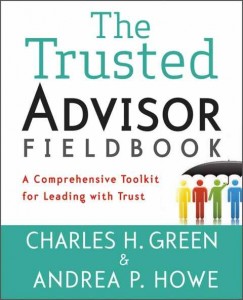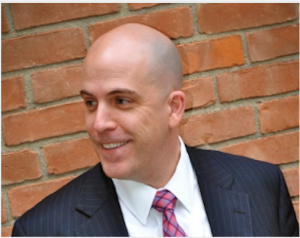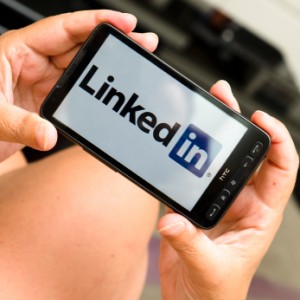Three trust-related headlines last week:
- An insider trading conviction for hedge-fund billionaire Raj Rajaratnam,
- A free-fall in Morgan Stanley’s stock price, and
- A drop in the Chinese government’s credibility.
A Person
Mr. Raj Rajaratnam, former head of the Galleon Group hedge fund, and once worth a billion and a half dollars, was sentenced to 11 years in prison. His crimes were the stuff of movies—secret deals and secret messages—insider trading.
Some finance theorists think “insider trading” should be legalized, though most people would sooner see heroin legalized if they had to choose. Rajaratnam’s white-collar hand-in-the-cookie-jar crimes are, it is generally agreed, egregious and immoral. He’s going where he belongs.
Raj is a poster child for low trust. Lying, cheating, conniving, sneaking—he was everything you wouldn’t want in a trusted partner.
But he is a sideshow. Rajaratnam, Bernie Madoff, Ivan Boesky—these are the movie versions of white-collar crime. Raj and Bernie no more caused our current financial malaise than Bonnie and Clyde caused the Great Depression. And we cannot solve our global trust problems by simply picking off colorful foot soldiers from the Dark Side, no matter how untrustworthy they are.
A Company
Jesse Eisinger in the NYTimes notes that by nearly every financial measure of strength and trustworthiness—more capital, longer-term financing, lower leverage—Morgan Stanley is a stronger bank than it was in September 2008, at the height of the crisis. So, why has their stock price dropped 42% this year?
Trust, that’s why.
Morgan Stanley, and other banks, still holds massive amounts (defined as over $50 trillion) in unregulated derivatives. And of course they don’t want regulation. But they are not stupid—the banks themselves are not about to trust each other when they know the other guy is holding part of that unregulated $50 trillion. As Eisinger puts it:
“Surely no bank would be so reckless as to accept dodgy collateral these days. It would hold out for something unassailable, like, say, Triple A mortgages on American homes. Wait, scratch that. It would accept sovereign debt, perhaps from some European realm that has been around for centuries. Whoops, no, no. Well, O.K., maybe United States Treasuries—and we’ll agree to ignore that one of the country’s two major political parties was willing to plunge the United States into default to achieve its aims.”
The banks don’t trust each other. They do agree that they don’t want governments checking their numbers; they also agree that letting Lehman go was a big mistake—that governments should be willing to bail them out.
But the people are not too happy about their governments bailing out the rich guys, whether they’re at OWS, in Greece, or even in Germany. The governments are looking like neither paragons of virtue nor representatives of their citizenry.
A Country
Never mind the GOP playing chicken with the US’s credit ratings; never mind Germans and Greeks playing chicken with Europe. As Reuters notes:
Equities jumped 10 percent on the day three years ago when China said it would buy up bank shares in the market. They barely budged after a similar announcement on Monday. The difference is credibility. A sustained financial crisis has shown that governments around the world have a limited ability to make things better.
Nations around the world have kicked the can down the road regarding public expenditures. They’ve done the same thing regarding energy and the environment.
The human race has been conspicuously failing recently at two key trust skills—collaboration and constructive confrontation.
Trust Recovery: Where Do We Start?
Yes, it’s complicated. There are feedback loops everywhere. Beware of simple answers. 9-9-9 may work in a computer simulation game, but does not a tax plan make. 8-8-8 is not the answer to health care, and 7-7-7 is a better lotto number than a plan for campaign finance.
But complexity works both ways. It means the whole system is loaded with causality. No single change at the person, policy or institution level may be necessary, or sufficient. But actions at every level do have impacts. We can push back at the personal level, at the company level, and at the national level.
It is a good thing that Raj Rajaratnam got the longest-ever prison sentence for insider trading; it sets a moral tone that is in stark contrast to an amoral ideology that we have allowed to infect our entire commercial sector.
It is a good thing that people are protesting the serious transfer of wealth and power that has taken place in recent years, because increasing inequality ruins social trust.
Yes, it’s complex to recover trust, but it can start simply. Here are three steps.
1. Promote personal character. Don’t fudge your taxes. Don’t lie, don’t ask others to do so, and just say no to those who ask you to do so. Teach your children. Thank people who do good and shame those who don’t. Stick your neck out a little. On alternate Thursdays, pay the toll for the car behind you. Pick out a small sum of money and give it to a charity that needs it more than you do.
2. Promote better thinking. We have seen the result of four decades of economists who think that markets are self-clearing and that financial institutions will self-regulate out of concern for their reputation; business theorists who preach competition instead of collaboration; CEOs who think the purpose of a company is to raise shareholder wealth; and politicians who think either that government is a feeding trough or that interstate highways are communist plots.
The result is not good, and much of the trouble arises from bad beliefs. We will not solve our problems through belief in econometrics, patent litigation, or demonization of foreigners. Tell the b-school professors, the law schools, the think tanks and the industry associations to apply their talents to understanding and building systems around collaboration instead.
We are, in fact, all in this together. We need to start believing it so we can act on this belief.
3. Promote better politicians. Don’t support simplistic ideologies. Stop contributing to single-issue pressure groups. Scream for campaign finance reform; on everything else, stop screaming.
Read up. On alternate Tuesdays, watch Fox or CNBC, whichever one you makes you uncomfortable. On alternate Fridays, read a foreign newspaper online. Don’t give money to, talk about, or vote for candidates who out-negative their opponents. Support those with a message and a plan of their own.
Tell the media, the politicians and anyone who wants your support that you’re done with vague platitudes and simple slogans. Tell them you want the truth.
Ask them, “Why should I trust you?” And don’t settle for an answer you can’t believe in.

 Over the past few months we’ve counted down 144 daily #TrustTips on Twitter. Each tip aimed to help you improve your trustworthiness and trusted relationships within your professional and personal lives. We collected them all
Over the past few months we’ve counted down 144 daily #TrustTips on Twitter. Each tip aimed to help you improve your trustworthiness and trusted relationships within your professional and personal lives. We collected them all  Janet Andrews is a senior-level consultant at SRA’s
Janet Andrews is a senior-level consultant at SRA’s  From the Front Lines: Walking Away from the Table
From the Front Lines: Walking Away from the Table
 A colleague recently asked me how I handle LinkedIn invitations from people I don’t really know. Another colleague asked about connecting to people whose reputation is questionable. While the same questions can be asked about Facebook, Google Plus and other social media, because of the differences in the types of services and benefits each offer, I’m only going to discuss LinkedIn here, and address mostly issues relating to trust.
A colleague recently asked me how I handle LinkedIn invitations from people I don’t really know. Another colleague asked about connecting to people whose reputation is questionable. While the same questions can be asked about Facebook, Google Plus and other social media, because of the differences in the types of services and benefits each offer, I’m only going to discuss LinkedIn here, and address mostly issues relating to trust. If one wants to be a pessimist about the future of work, there is no shortage of opportunities to nurture one’s paranoia. A compelling new work by Lynda Gratton—
If one wants to be a pessimist about the future of work, there is no shortage of opportunities to nurture one’s paranoia. A compelling new work by Lynda Gratton—